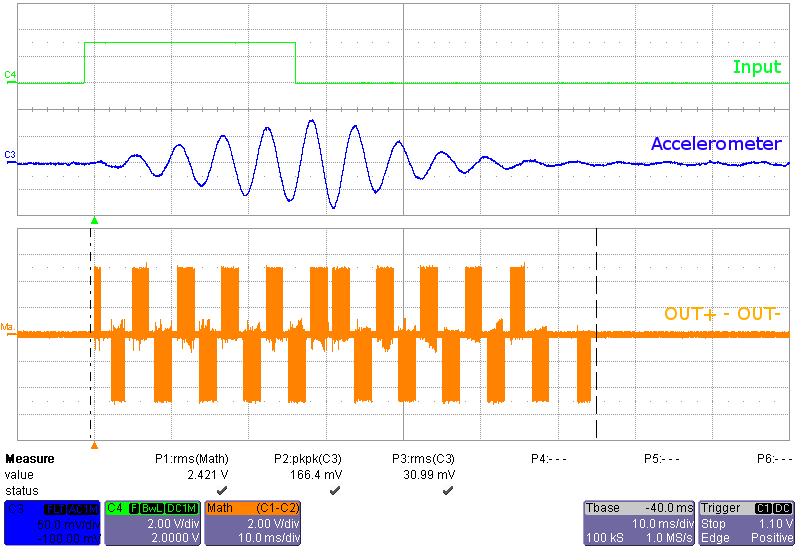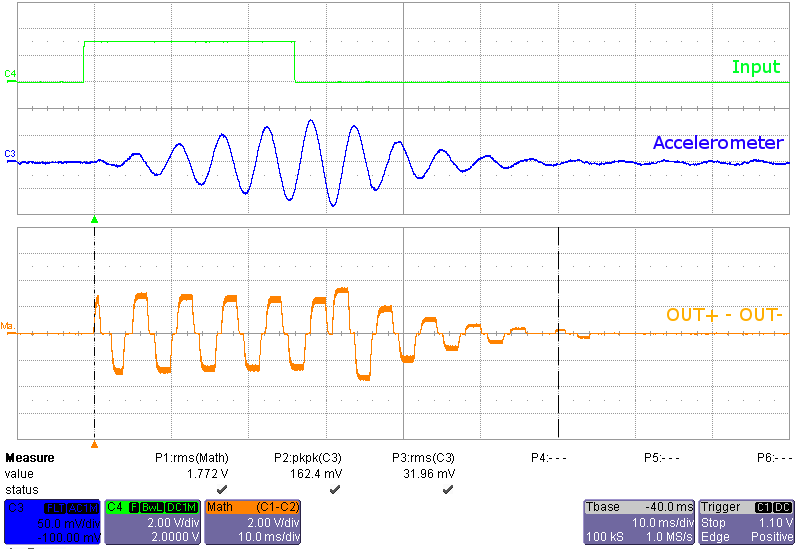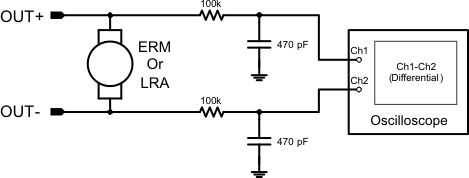SLOU432B December 2015 – December 2021 DRV2625
5.1 Using Low-Pass Filter to Record Waveforms
The DRV2625 drives LRA and ERM actuators using a 20-kHz PWM modulated waveform, but only the frequencies around the LRA resonant frequency or the ERM DC drive voltage are relevant to the haptic actuator vibration. The higher frequency switching content does not contribute to the vibration strength of the actuator and can make it difficult to interpret the modulated output waveform on an oscilloscope. The oscilloscope image on the left shows the DRV2625 unfiltered waveform and the image on the right shows a filtered version used for observation and measurement.
 Figure 5-2 DRV2625 Unfiltered Waveform
Figure 5-2 DRV2625 Unfiltered Waveform Figure 5-3 DRV2625 Filtered Waveform
Figure 5-3 DRV2625 Filtered WaveformIf the DRV2625EVM-CT filter is not used, TI recommends using a 1st-order, low-pass filter with a cutoff between 1kHz and 3.5kHz . Below is a recommended output filter for use while measuring and characterizing the DRV2625 in the lab.
 Figure 5-4 Measuring the DRV2625 Output Signal with an Analog Low-Pass Filter
Figure 5-4 Measuring the DRV2625 Output Signal with an Analog Low-Pass Filter